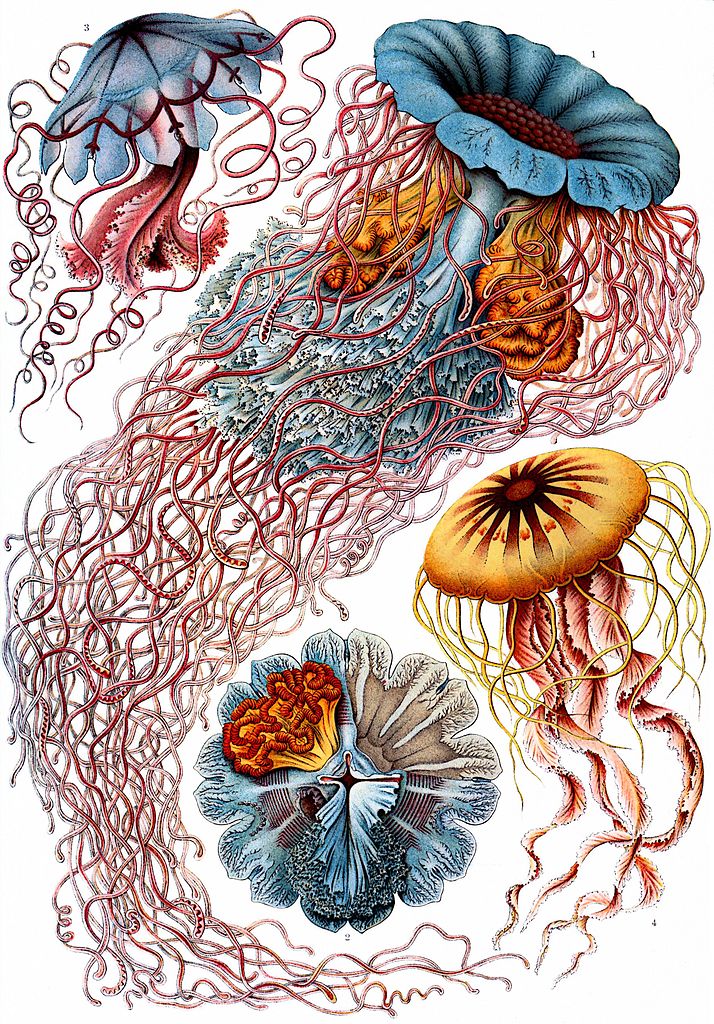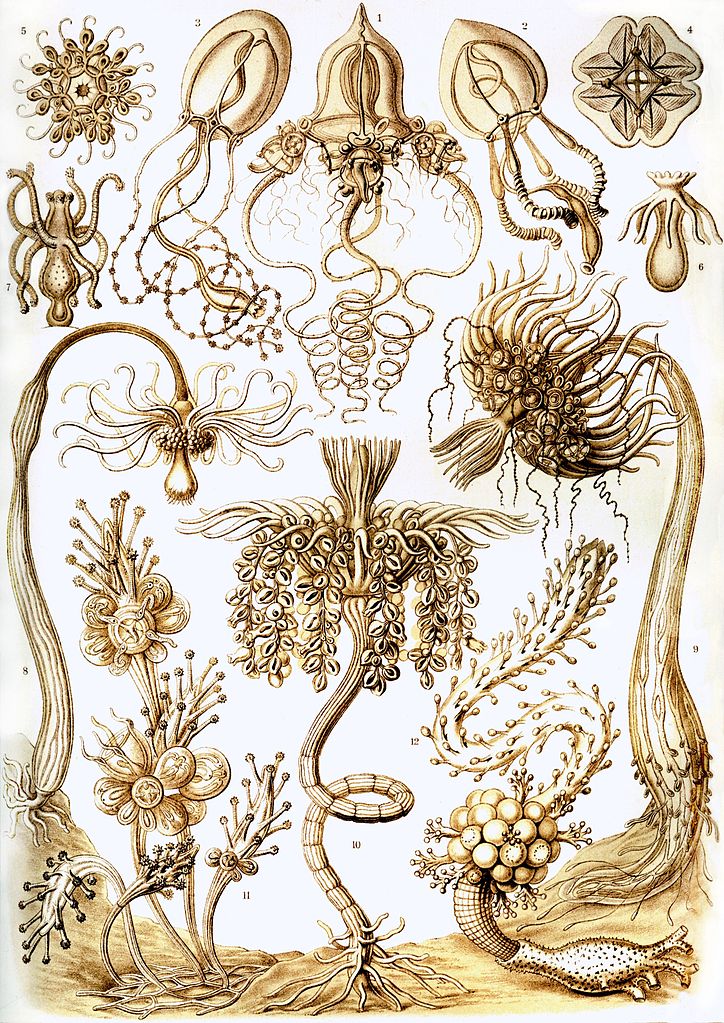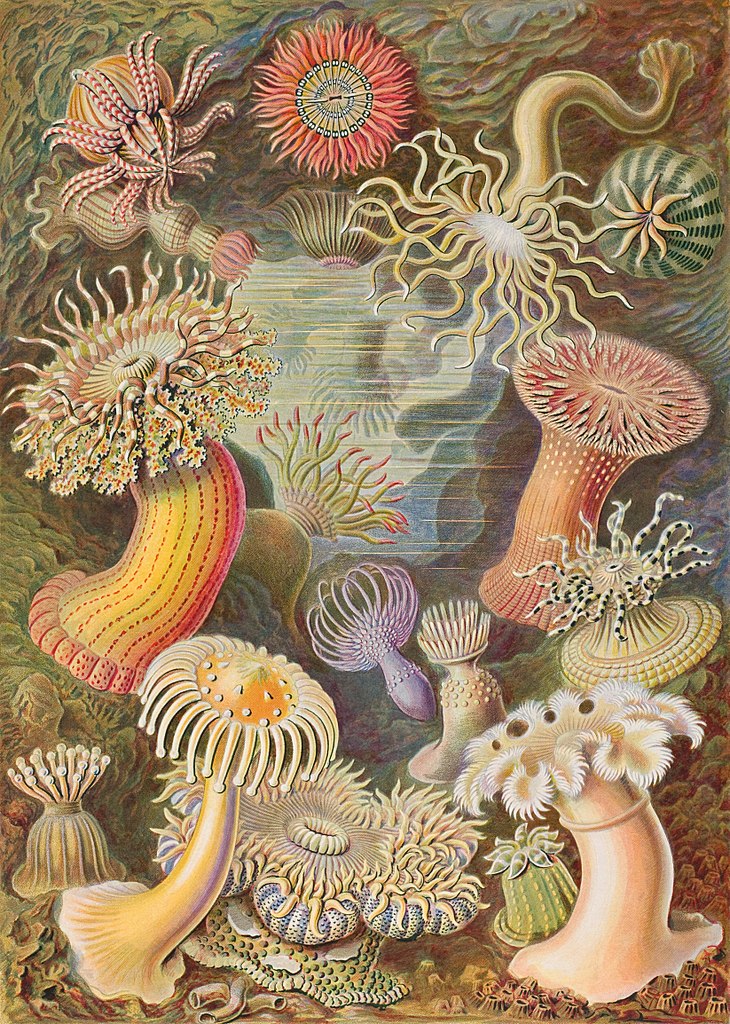
If you follow the ongoing beef many popular scientists have with philosophy, you’d be forgiven for thinking the two disciplines have nothing to say to each other. That’s a sadly false impression, though they have become almost entirely separate professional institutions. But during the first, say, 200 years of modern science, scientists were “natural philosophers”—often as well versed in logic, metaphysics, or theology as they were in mathematics and taxonomies. And most of them were artists too of one kind or another. Scientists had to learn to draw in order to illustrate their findings before mass-produced photography and computer imaging could do it for them. Many scientists have been fine artists indeed, rivaling the greats, and they’ve made very fine musicians as well.

And then there’s Ernst Heinrich Haeckel, a German biologist and naturalist, philosopher and physician, and proponent of Darwinism who described and named thousands of species, mapped them on a genealogical tree, and “coined several scientific terms commonly known today,” This is Colossal writes, “such as ecology, phylum, and stem cell.” That’s an impressive resume, isn’t it? Oh, and check out his art—his brilliantly colored, elegantly rendered, highly stylized depictions of “far flung flora and fauna,” of microbes and natural patterns, in designs that inspired the Art Nouveau movement. “Each organism Haeckel drew has an almost abstract form,” notes Katherine Schwab at Fast Co. Design, “as if it’s a whimsical fantasy he dreamed up rather than a real creature he examined under a microscope. His drawings of sponges reveal their intensely geometric structure—they look architectural, like feats of engineering.”

Haeckel published 100 fabulous prints beginning in 1889 in a series of ten books called Kunstformen der Natur (“Art Forms in Nature”), collected in two volumes in 1904. The astonishing work was “not just a book of illustrations but also the summation of his view of the world,” one which embraced the new science of Darwinian evolution wholeheartedly, writes scholar Olaf Breidbach in his 2006 Visions of Nature.
Haeckel’s method was a holistic one, in which art, science, and philosophy were complementary approaches to the same subject. He “sought to secure the attention of those with an interest in the beauties of nature,” writes professor of zoology Rainer Willmann in a book from Taschen called The Art and Science of Ernst Haeckel, “and to emphasize, through this rare instance of the interplay of science and aesthetics, the proximity of these two realms.”

The gorgeous Taschen book includes 450 of Haeckel’s drawings, watercolors, and sketches, spread across 704 pages, and it’s expensive. But you can see all 100 of Haeckel’s originally published prints in zoomable high-resolution scans here. Or purchase a one-volume reprint of the original Art Forms in Nature, with its 100 glorious prints, through this Dover publication, which describes Haeckel’s art as “having caused the acceptance of Darwinism in Europe…. Today, although no one is greatly interested in Haeckel the biologist-philosopher, his work is increasingly prized for something he himself would probably have considered secondary.” It’s a shame his scientific legacy lies neglected, if that’s so, but it surely lives on through his art, which may be just as needed now to illustrate the wonders of evolutionary biology and the natural world as it was in Haeckel’s time.

Note: An earlier version of this post appeared on our site in 2017.
Related Content
Download 435 High Resolution Images from John J. Audubon’s The Birds of America
Two Million Wondrous Nature Illustrations Put Online by The Biodiversity Heritage Library
Cats in Japanese Woodblock Prints: How Japan’s Favorite Animals Came to Star in Its Popular Art
Josh Jones is a writer and musician based in Durham, NC. Follow him at @jdmagness


And Beta Brand made Haeckel-loha shirts/dresses in two different patterns of the illustrations.
I must disagree with the author of the Taschenbook, Rainier Willman; at the time the originals came out, the idea that science and aesthetically pleasing results may have been anathema and rarely seen at the time among the general population, but the scientific community was certainly clued in. And, obviously, now we could site multitudes of examples. Assuming he was speaking, specifically, about the past.
Nice hit finding the Dover publication, but dig farther and there are many different ways to get the images — the easiest free version being the Biodiversity Heritage Library online. 👍